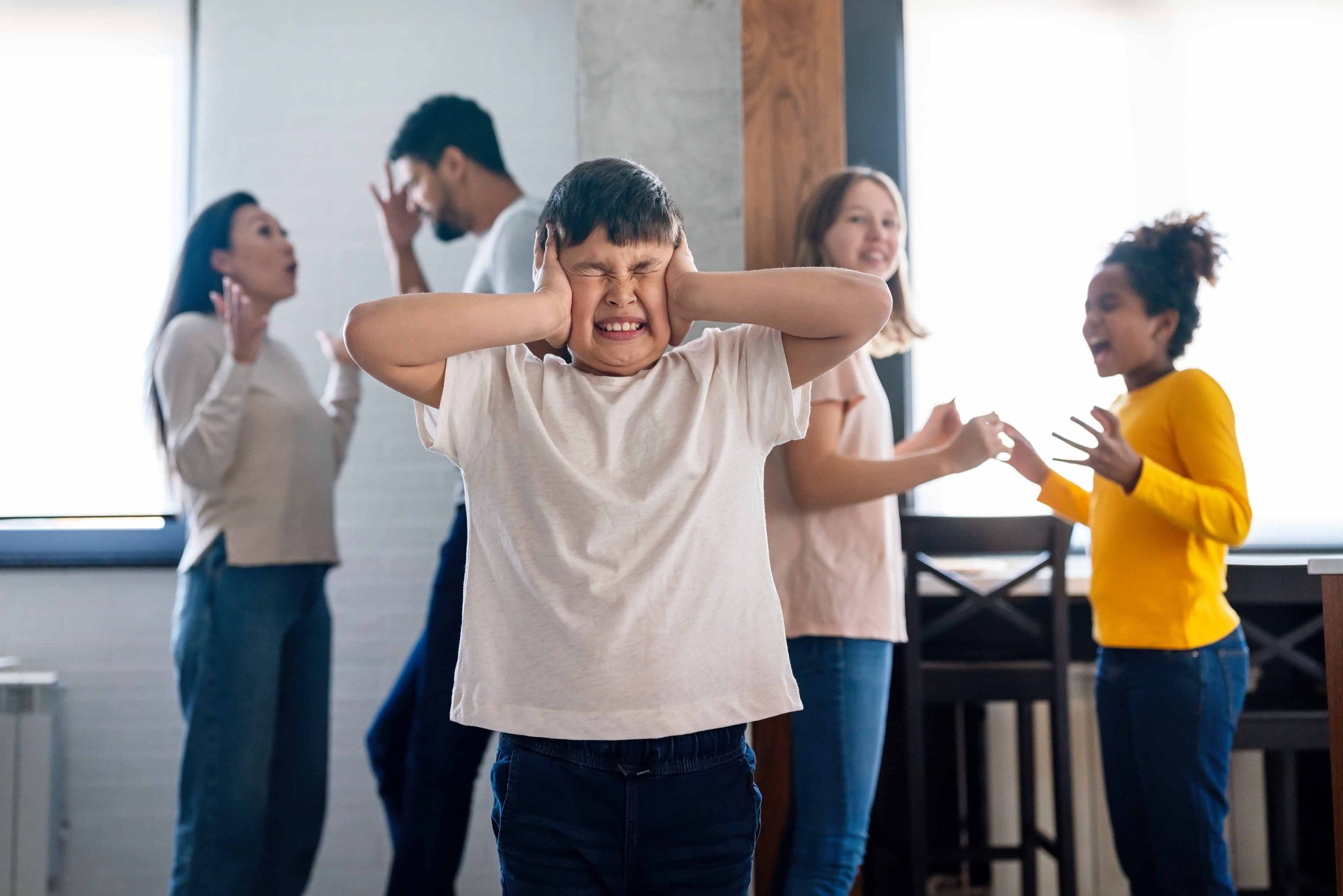Have you ever had a conversation with a family member and suddenly other family members who weren’t initially involved in the conversation have intervened? Have you ever felt the need to intervene to help with a problem that wasn’t originally yours? Are there certain taboo topics that suddenly cause silence or avoidance in your family? Are there members of your family who seem stuck in their problems? If your answer is yes to any of these questions, family therapy may be right for you and your family.
Family therapy is a type of therapy that works on family dynamics surrounding one or more problems. Although it may seem that one or more people have an obvious problem in the family, family therapy seeks to see how all family members react to the identified problem (perhaps a problem will be discovered that is not so obvious!). Family therapy intervenes upon the system (i.e., the family as a whole), not just upon one of its parts (even if that may be the reason that brought the family to therapy). Family therapy has a relational approach: it looks at how the way people relate to each other impacts the management, resolution, or maintenance of a problem or crisis. Sometimes, it is possible to analyze how one’s own attempts to resolve a problem can become problematic… even if that is not your intention as family!
There are many modalities and schools within family therapy, each with a particular approach (some more focused on behavior, others on ways of thinking, and others on emotions; Midorri Hanna, 2018). Family therapy has undergone an extensive development over many decades, and now there are family therapists who integrate the richness of different perspectives in order to treat a family from different angles and theories. Some of them may surprise you!
Family therapy seeks what can be different; different ways of doing things. It is also possible to look for exceptions to a problem: to see what your family or a particular member of your family is capable of doing. Your family will be seen as a large system, like an organism, whose natural tendency is to adapt to change as circumstances and stages of life evolve. Some families get stuck in this process. It is as if they remain in a previous episode and try to keep things as they are. Think of a butterfly that stays in its cocoon, continuing as if it were just a caterpillar: this will create friction and prevent its evolution. Change, although it may sound positive, can also be disruptive and unsettling. The fact that things remain as they are can give a sense of control, familiarity, predictability, and even what “feels right or is right.”
Returning to the example of the butterfly: it is as if the caterpillar decided to stay in the cocoon because the environment is familiar; it may seem protective, and its movements are predictable. In family therapy, the aim is to discover what leads your family to want to stay where it is and the effects this is having on your family or on any particular member.

Common problems (teenagers, separation, intergenerational conflicts)
Family therapy seeks to identify problems that a family cannot solve on its own, either because they lack the necessary skills or because they have the skills but are emotionally overwhelmed when it comes to putting them into practice (Taibbi, 2022). Whether or not skills have been acquired, a special focus is placed on the dynamics and ways of relating that prevent a family from moving forward.
What types of problems are most commonly seen in family therapy? Family therapy can be used to treat a wide range of issues and challenges, as can be seen on the official website of the American Association for Marriage and Family Therapy¹. The common issues addressed depend on the clinic and the type of families they serve. Some that are seen in several clinics include the following:
- Difficulties in raising children, both young children and adolescents. This includes possible disagreements between parents regarding parenting practices, inconsistency in setting limits, and allowing natural consequences for negative behaviors...
- Difficulties in conflict resolution and communication. This includes indirect communication, conflict management styles that push people away rather than bring them closer, and difficulties in managing emotions, among others.
- Couple problems that may have an effect on the couple and/or the family as a whole. Sometimes family problems reflect not only disagreements between parents about parenting, but something deeper about the intimacy and connection between the couple.
- Facing the challenge of transitions and adjustments that may occur in the family (a new life stage, moving, a restructuring of the family unit due to death or separation and divorce...).
- Specific behavioral problems in children and adolescents (aggressive/disruptive behavior, oppositional defiant disorder, etc.).
- Body-related problems in children and adolescents: enuresis, encopresis, asthma, etc.
- Mental health problems, trauma, and illness in any family member (including eating disorders, depression, anxiety, self-harm, abuse/aggression, chronic illnesses, etc.).
- Substance abuse problems. When someone in a family abuses substances, there are dynamics surrounding the behavior of the person who is abusing these.

Benefits of attending family therapy
You may wonder if it is necessary for the whole family to attend a session if it seems that a problem or transition does not affect all members equally. However, you may change your mind when you see some of the benefits that family therapy can offer (London waiting room, NHS, 2024), as they go beyond the resolution of a specific problem:
- Improved communication.
- Strengthened family relationships.
- Takes into account different perspectives that help towards a more global and comprehensive understanding.
- Teaches conflict management skills.
- Encourages and supports change.
- Provides a safe space to talk.
How we work at our clinic
Family therapy may include sessions in which the whole family is requested to attend, sessions in which only the parents or siblings are interviewed, and even individual sessions with a family member if necessary. It is also possible that there will be a coordinated effort with other mental health professionals whilst family therapy is being offered.
The focus of family therapy sessions will be on how you communicate and how you try to solve problems together. The therapist’s mission will be to help you see, feel, or do things differently (depending on their approach). He/she will not necessarily tell you what to do (although he/she may); sometimes he/she will encourage you to stop doing something to see what you can do alternatively (Taibbi, 2022). The therapist’s role is to be a facilitator of change, encouraging the family to try to solve problems in new ways. Ways that ideally do not perpetuate stagnation and unnecessary distress, and ways that fit you so that you can bring out what does work in the family and reduce what does not.

When should we seek professional help?
If you consider that your family is stuck in its own attempts to solve the problem and that this repeatedly and consistently leads to clashes that drive you further apart rather than bringing you closer together… or, on the contrary, bring you too close together (without boundaries), it would be very beneficial to give family therapy a try.
According to Pittman (1995), there are families in which situational crises or unexpected disasters occur (loss of a family member, economic collapse, natural disaster), other families experience transitional crises (marriage, divorce, death of a parent, children leaving home, etc.), others have structural crises (meaning that there are crises due to the family structure in itself that have been present for a long time and may have peaks of intensity), and others have crises due to helplessness (in which a family member is in a situation of dependency). If you think you are facing any of these crises and your family seems to be overwhelmed, do not hesitate to make an appointment with a family therapist.
References:
¹ https://www.aamft.org/AAMFT/Consumer_Updates/Consumer_Updates.aspx
London Waiting room (julio de 2024). Family therapy. Tomado de: https://londonwaitingroom.nhs.uk/family-therapy
Midorri Hanna, S. (2018). The practice of Family Therapy. Key elements across models. Routledge.
Pittman, F. (1995). Una teoría de las crisis familiares. En Pittman, F. Momentos decisivos Tratamiento de familias en situaciones de crisis (p.25-67). Paidós Terapia Familiar.
Taibbi, R. (2022). Doing Family Therapy. Craft and creativity in clinical practice. The Guildford Press.
Division of Psychology, Psychotherapy and Coaching
Psychologist
Adults, families and couples
Idiomas de trabajo: Español, inglés y neerlandés

